Why Art Is For Everyone
When life gets overwhelming, turning to creative activities can be a powerful way to ease stress, support mental health, and reconnect with yourself. Whether it’s doodling, painting, or stitching, art offers mindful moments of calm that anyone can access - no “talent” required.
Art can be a quiet, calming pal that helps us find our balance again. So many people believe that art is only for the ‘talented’, something reserved for galleries or gifted people who can draw super realistic portraits. But the truth is, creativity belongs to all of us. It’s not about perfection or performance. It’s about giving yourself permission to explore, play, and express what we often can’t in another way.
The Mental Health Benefits of Creative Activities
Art helps us pause and breathe
In a world that constantly demands productivity and results, art offers something radically different. A pause. A big deep breath. And a little dose of FUN! Whether it’s painting, knitting, doodling, collaging, or sculpting, creative activities provide a way to regulate our emotions, reduce stress, and connect with ourselves in a deeper way.
For people navigating mental health challenges or those of us with neurodivergent brains, art can be especially powerful. As a tool for grounding, self-understanding, and emotional release.
Art reduces stress and anxiety
Science is increasingly backing up what artists and makers have known for centuries: creating is good for us. Research from Drexel University found that just 45 minutes of making art led to significantly lower cortisol levels (a key marker of stress) in participants, no matter their skill level. Other studies have shown that creative activities can stimulate dopamine production, the brain’s ‘feel good’ chemical, which helps to improve mood, motivation, and even resilience.
Neurologically, engaging in creative practices activates both hemispheres of the brain. This cross-hemisphere activity has been linked to improved problem-solving, emotional regulation, and memory. Repetitive, hands-on activities like knitting or drawing also mimic the calming effects of mindfulness meditation, helping to slow breathing, regulate heart rate, and reduce anxiety.
Art Supports Emotional Expression
For wonderful neurodivergent humans the benefits of art can be even more profound. Because creative expression doesn’t rely on conventional communication, it provides an accessible outlet when words feel limiting or overwhelming. The sensory experience of working with textures, colours, and shapes can also help regulate sensory input, providing both stimulation and calm, depending on what’s needed.
Art Helps Busy, Overwhelmed Brains Find Focus
Here’s how art can support us in all areas of our lives, when life (and our brain!) gets busy:
💜Grounding and focus – Creative activities bring you back into the present moment, helping to quiet racing thoughts.
💜Expression without words – When feelings are too big, confusing, or tangled, art offers a non-verbal way to let them out.
💜Downtime for the nervous system – Making marks, stitching, colouring, or shaping clay can activate the body’s relaxation response, slowing the heart rate and easing tension.
💜A safe, private outlet – Nobody else needs to see what you create. It doesn’t have to make sense, be ‘good’, or be shared. Art can simply exist for you, without explanation or justification.
💜Encouragement of self-acceptance – There’s no right or wrong way to create. This freedom can help loosen perfectionism and nurture self-kindness.

Simple Mindful Art Activities to Try at Home
Here are some simple ways to weave art into your life (without feeling like it’s just one more thing for you to make time for):
🎨Art journalling – Keep a notebook where you doodle, splash colour, scribble words, or collage scraps. No rules, just a container for whatever wants to come out.
🎨Micro-moments of creativity – You don’t need hours. Five minutes of colouring, knitting a single row, or sketching while you wait for the kettle can still be grounding.
🎨Use what’s around you – Old magazines, pens, a scrap of fabric – it doesn’t have to involve fancy supplies.
🎨Create ritual, not routine – Instead of adding ‘art time’ to your list, let it become a soothing ritual when you need a break: get comfy, snuggle under a blanket (or with your fluffy cat if you’re like me!), choose a colour, and simply see what happens.
🎨Let go of outcomes – Remind yourself that art is about the process, not the product. The value lies in how it makes you feel, not in what it looks like.
Art doesn’t have to be for anyone else. It’s not about talent, finished pieces, or sharing. It’s simply about giving yourself space to feel, express, and reconnect. Whether you’re navigating mental health challenges, exploring your own neurodivergence, or just looking for a moment of peace, creativity is your new best friend.
Creativity isn’t a luxury; it’s a powerful tool for wellbeing. Whether you’re exploring mindful art at home or bringing creative sessions into your workplace, these small moments of making can support mental health and help you feel more grounded.
Explore my mindful art workshops or get in touch to create a session for your group or team.


